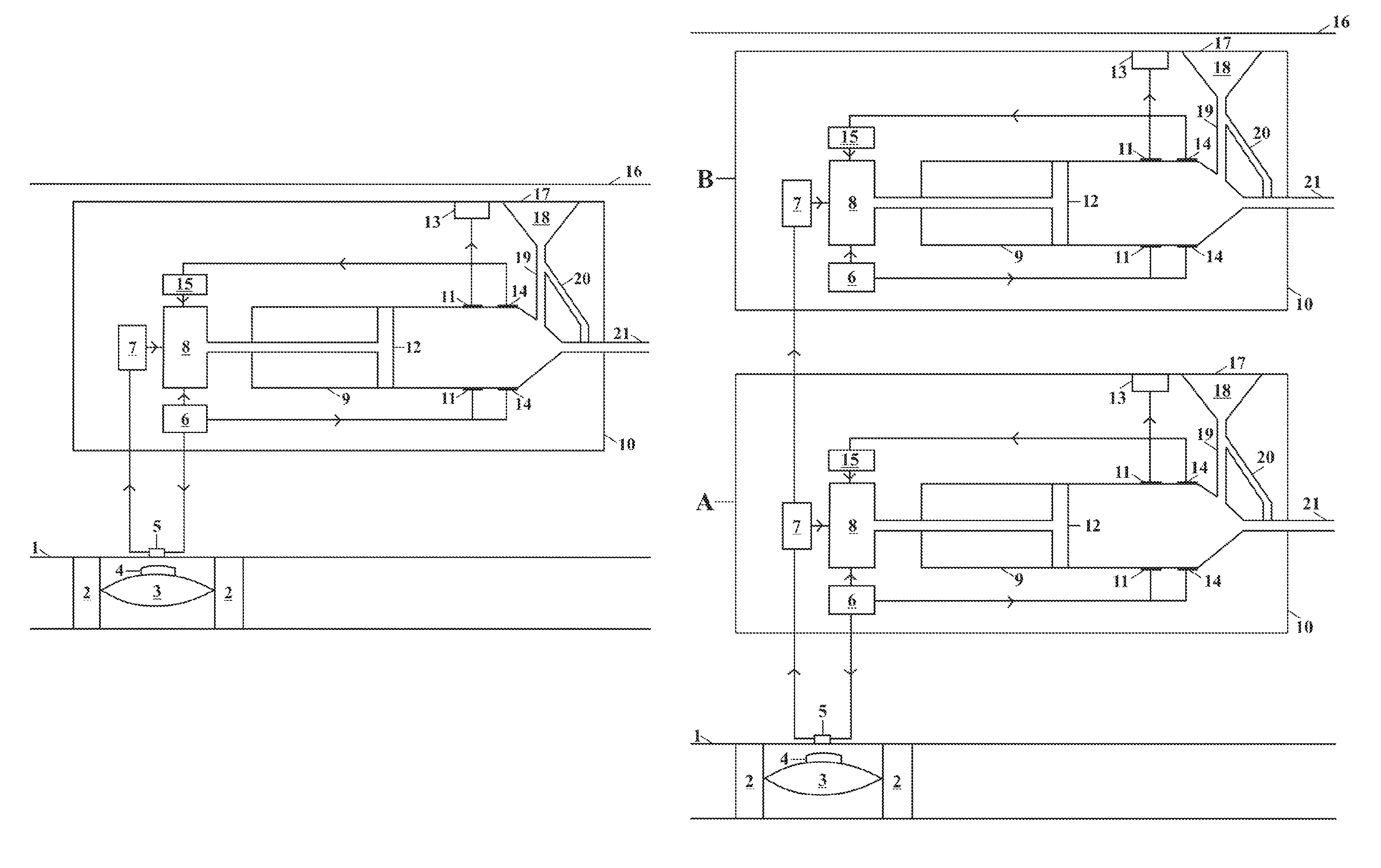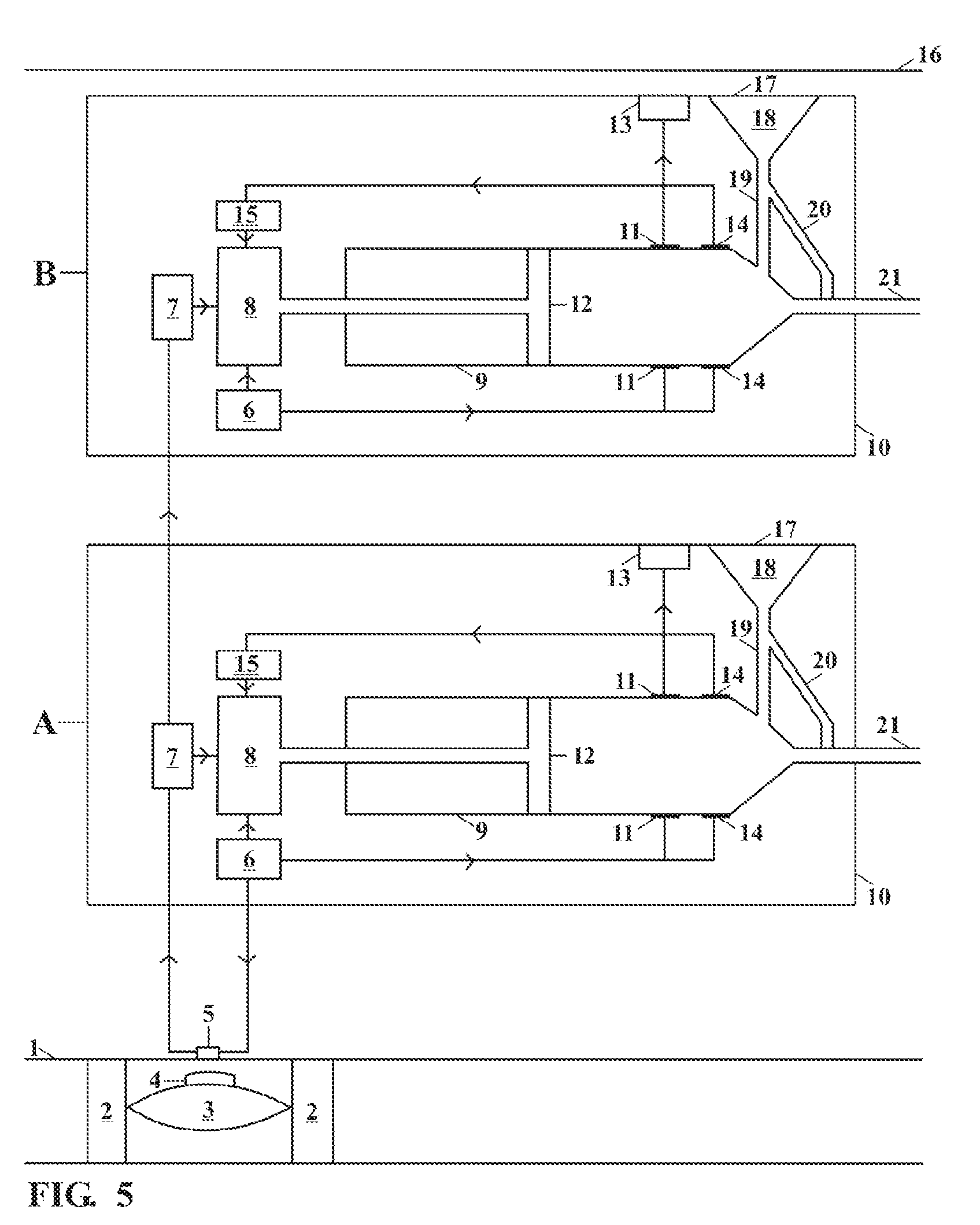Homeostatic insulin pump
a homeostatic, insulin pump technology, applied in the field of medical devices, can solve the problems of affecting the function of the homeostatic insulin pump, the risk of infection of the pump and the glucose sensor, and the inability to completely avoid the hypoglycemia episode,
- Summary
- Abstract
- Description
- Claims
- Application Information
AI Technical Summary
Benefits of technology
Problems solved by technology
Method used
Image
Examples
Embodiment Construction
[0028]This invention relates to an implantable insulin pump that controls the BSL homeostatically, thereby mimicking the way in which a healthy pancreas works.
[0029]In its simplest form this is achieved this by placing a small valve in the bloodstream and linking this to an insulin pump located inside the body. The valve contains a semi-permeable membrane, which enables it to monitor changes in the BSL by means of osmosis. When the BSL falls below a certain level, the valve expands and switches off the insulin pump. When the BSL rises again, the valve shrinks and the unit begins pumping insulin again.
[0030]The valve is made from the patient's own body tissues, thereby removing the risk of rejection and infection. As the pump is implanted in the body permanently, the battery has to be recharged remotely by means of electromagnetic induction. The technology to do this has existed since the beginning of the last century, but recent developments mean that batteries can now be recharged ...
PUM
 Login to View More
Login to View More Abstract
Description
Claims
Application Information
 Login to View More
Login to View More - R&D
- Intellectual Property
- Life Sciences
- Materials
- Tech Scout
- Unparalleled Data Quality
- Higher Quality Content
- 60% Fewer Hallucinations
Browse by: Latest US Patents, China's latest patents, Technical Efficacy Thesaurus, Application Domain, Technology Topic, Popular Technical Reports.
© 2025 PatSnap. All rights reserved.Legal|Privacy policy|Modern Slavery Act Transparency Statement|Sitemap|About US| Contact US: help@patsnap.com



